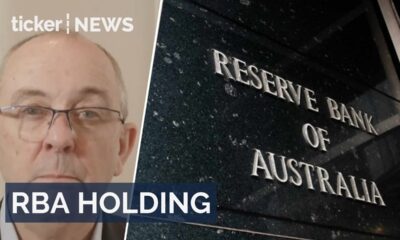Money
“We’re used to it” – Business continues in Israel

Money
Stocks rally ahead of Thanksgiving as markets log four days of gains
Markets gain momentum ahead of Thanksgiving, with the Dow up 388 points and Oracle rising 4% amid investor optimism.
Money
Dow surges 500 points amid rate cut optimism
Dow jumps 569 points on fresh hopes for December rate cut and AI market optimism
Money
Gold prices surge as Central Banks buy big, but risks grow ahead
Gold prices surge as central banks increase demand; risks include a stronger dollar and rising interest rates.
-



 News4 days ago
News4 days agoxAI’s $15 billion raise, deadline pressure and Grokipedia launch
-



 Tech5 days ago
Tech5 days agoOpenAI launches shopping research tool for ChatGPT users
-



 News5 days ago
News5 days agoS&P 500 and Nasdaq rally on Alphabet’s AI boost
-



 News3 days ago
News3 days agoAre women being silenced on LinkedIn? Algorithm claims spark debate
-



 News4 days ago
News4 days agoU.S. retail sales slowdown sparks new fears ahead of Fed decision
-



 News4 days ago
News4 days agoRBA holds rates as investors shift from property to stocks
-



 Leaders2 days ago
Leaders2 days agoRegional small businesses thrive through digital marketing strategies
-



 Money3 days ago
Money3 days agoStocks rally ahead of Thanksgiving as markets log four days of gains








